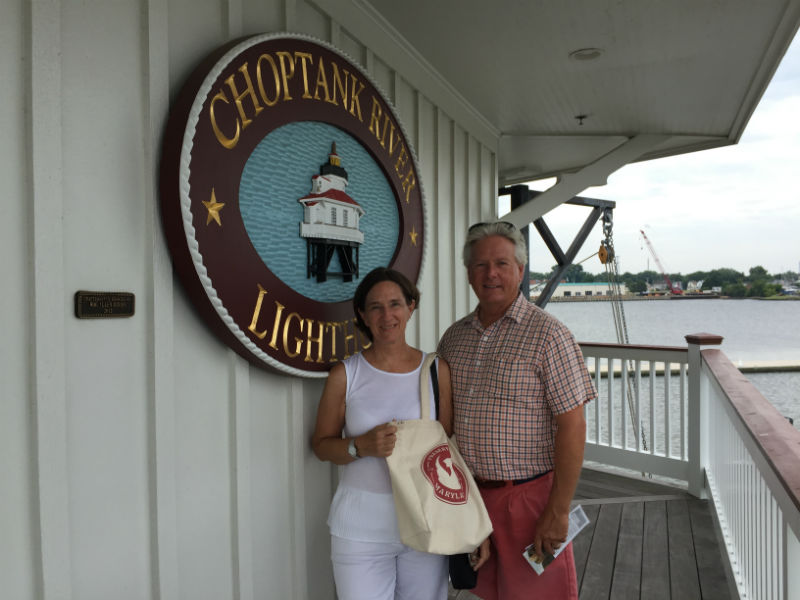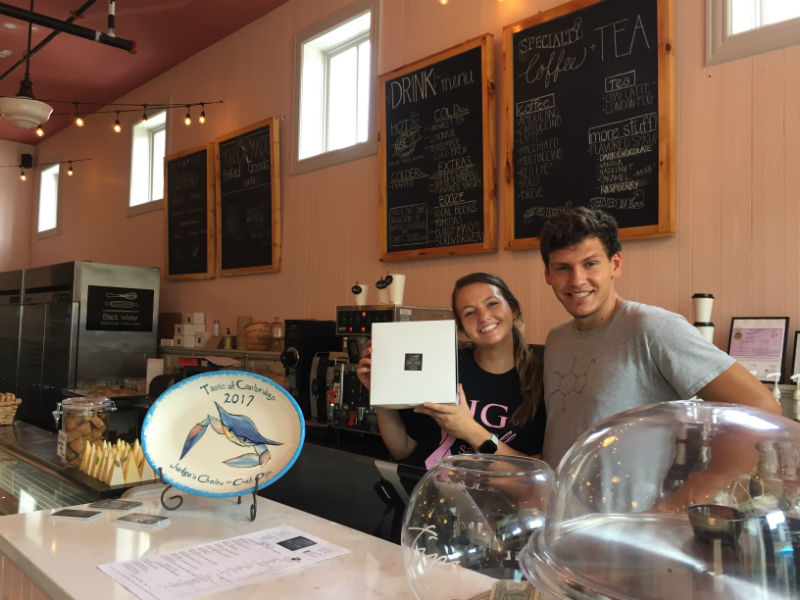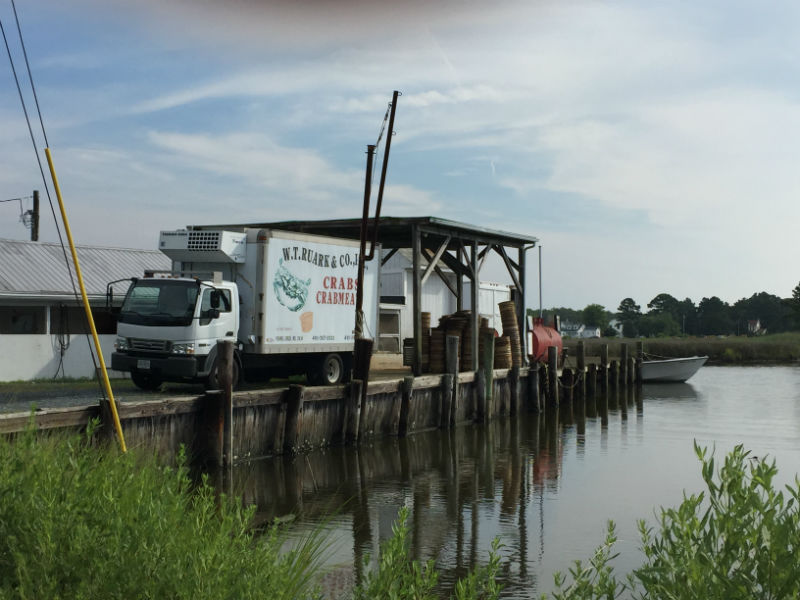On a journey to visit all of Maryland’s twenty-four counties, Diane Caslow, a Preservation Maryland board member, recently visited Dorchester County. Dorchester County has more waterways that any other county, and is a great place to visit this summer. Here are some more recommendations:
From Diane’s Travelogue
A Dorchester County visitor guide starts with “Water moves us,” because as one of the oldest Maryland counties, established in 1669, Dorchester County’s history is tied to the Chesapeake Bay and it’s many waterways making it a seafood powerhouse and a hub for boat building. Although we did not get to explore all of the waterways (I don’t think we could in a weekend!), we did get to experience some of them.
HOOPER’S ISLAND
As we were going during the height of the summer on a Sunday, we thought we would beat the crowd and get up extra early. Plus, I first wanted to drive to where the road ends at the southern-most tip of the Hoopers Island to see the beauty at the Island’s end. Hoopers Island is actually a chain of three islands, Upper Hoopers Island, Middle Hoopers Island and Lower Hoopers Island, with the Chesapeake Bay on one side and the Honga River on the other side. You can see miles of pristine shoreline, marshland and crab boats.
PHILLIPS’S SEAFOOD
In 1914, Augustus E. Phillips established the company’s first seafood processing plant on Hoopers Island which was the humble beginnings of what became a well-recognized seafood restaurant business, The Phillips Packing and Seafood Company. We stopped in a Hoopers Island General Store, which could supply just about everything that you might need for your household as well as a gathering place. Back on the main road, we stopped at Emily’s Produce, an amazing farm stand that is clearly a hit with the locals.
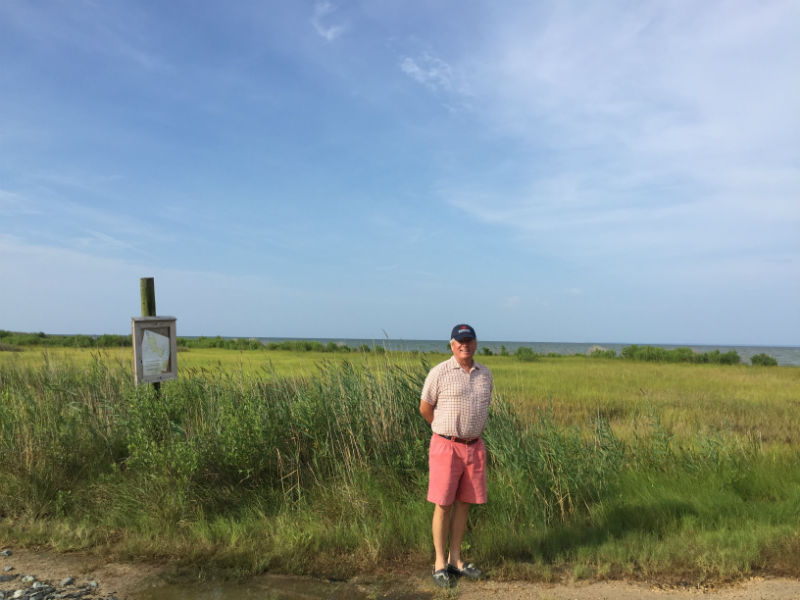
Jeff Caslow in the historic marsh landscape of Dorchester County, 2017.
HARRIET TUBMAN’S LEGACY
Harriet Tubman was born in Dorchester County in 1822, escaped from slavery and dedicated her life to helping others escape to freedom. The new visitor center just outside of Cambridge tells her life’s story, and a moving one it is. It is hard to imagine the life she had and what she sacrificed. Nearby is the Blackwater National Wildlife Refuge, established in 1933 as a waterfowl sanctuary for migrating birds. It is fed by the Blackwater River, so named for the tannin that is picked up as the water drains through the peat soil of the marshes. I imagine Harriet Tubman moving through these marshlands to help others escape to freedom.
DOWNTOWN CAMBRIDGE
Heading into Cambridge, we follow the a downtown Cambridge walking guide. Cambridge is one of the oldest cities in Maryland, laid out in 1684. From an “Eastern Shore Road Trips: 27 One-Day Adventures on Delmarva” by Jim Duffy, the story of Cambridge is one that had all its eggs in one basket-the The Phillips Packing and Seafood Company. When operations closed in 1960, Cambridge went into decline. However, through the walking tour, even on a rather quiet Sunday, we can see the signs of redevelopment.
- Blackwater Coffee Shop in Cambridge, Maryland.
- A common site of the seafood industry in Dorchester County.
For the love of a good coffee place , we spy the Blackwater Coffee Shop, housed in a beautiful old building brought to life again. As I am ordering up a storm of stuff to take with us, my husband is chatting someone up in the corner. Brett Summers introduces himself, his son and points to his daughter behind the counter. He is the owner of the coffee shop, developer and saver of some of the buildings we were admiring on Race Street. What luck to hear firsthand some of the redevelopment going on in Cambridge! Across the street, we check out Fishing Creek Barber Shop, which I first thought was just using the barber shop part as a creative space, but nope, it is a real barber shop selling local honey on the side.
We explore the buildings on Race Street and Poplar Street, noting the beautiful stain glass in what was the Phillips Hardware Building, built in 1904 by the founders of the Phillips Packing Company. We turn onto High Street for a lovely line of Victorian houses that takes us to Long Wharf, where the Choptank River Lighthouse sits. The lighthouse, built in 2012, is a replica of the historic lighthouse that once guided boats along the Choptank River.
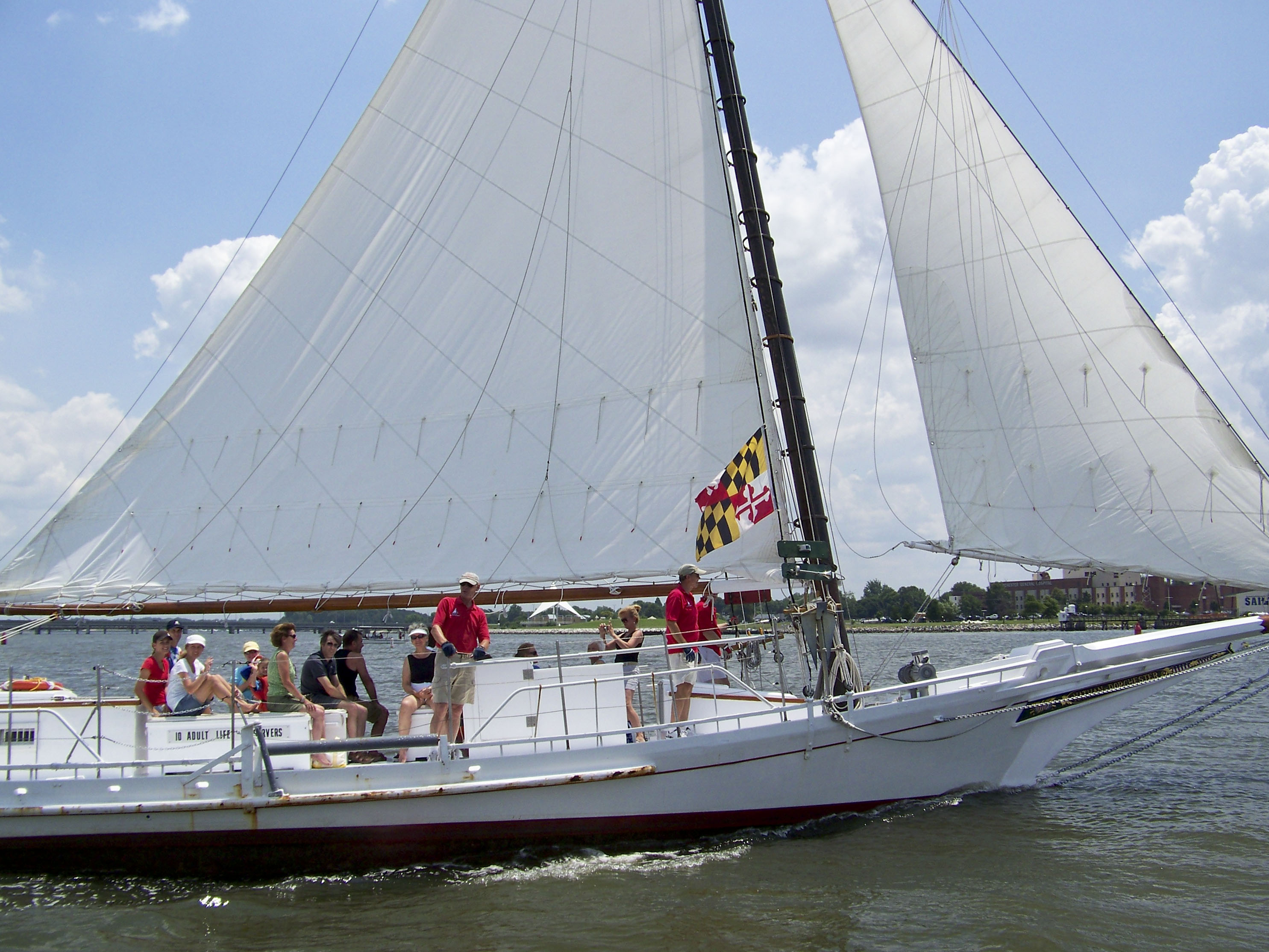
Skipjack Nathan of Dorchester. Photo from Last Skipjacks Project.
We see the Skipjack Nathan of Dorchester, but there are no tours on Sundays, so that will have to wait for another day. Of the original hundreds of skipjacks built as dredge boats, there are only a few still in commercial use. They are the last working sail fleet in the United States and are listed on the National Register of Historic Sites.
Before we head out of town, we turn down a side street to find the J. M. Clayton Company, founded in 1890. It is the oldest working crab processing plant in the world, beginning as a oyster shucking and packing operation on Hooper’s Island, moving to the current location in 1921.
Our last stop is RaR Brewing that opened in 2013 in a former pool hall and bowling alley. It has become very popular, particularly noted by people stand in line for new releases of their small batch brews.
THE EATS
Our last stop is on the recommendation of the one of the volutneers from the Choptank River Lighthouse on where the locals go for crab cakes. We head northeast to Suicide Bridge Restaurant in Hurlock. Not to be put off by the name, taken from the bridge that it sits next to it, we enjoy the quintessential taste of Maryland crab cakes and spy a J.M. Clayton sign as the source.
Each month we continue to be amazed at what our small state has to offer as we explore the rich history, life, preservation and redevelopment. Next month, we head to Charles County!
COUNTY-BY-COUNTY INSTALLMENTS
- November 2016: At World’s End in Cecil County
- December 2016: Washington County Bridges
- December 2016: Anne Arundel for a Capital Christmas
- February 2017: Winter Walk in Wicomico County
- March 2017: African-American History in Prince George’s County
- March 2017: Main Street March Madness in Caroline County
- April 2017: Horses and Hounds Byway through Baltimore County
- May 2017: Riding the Rails through Allegany County History
- July 2017: The History of Howard County

